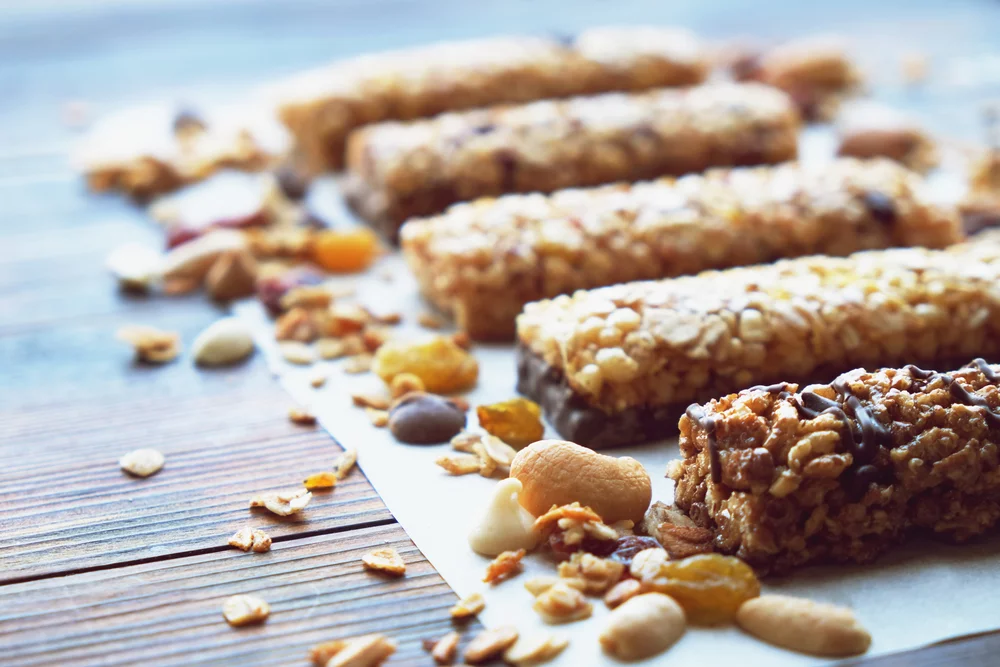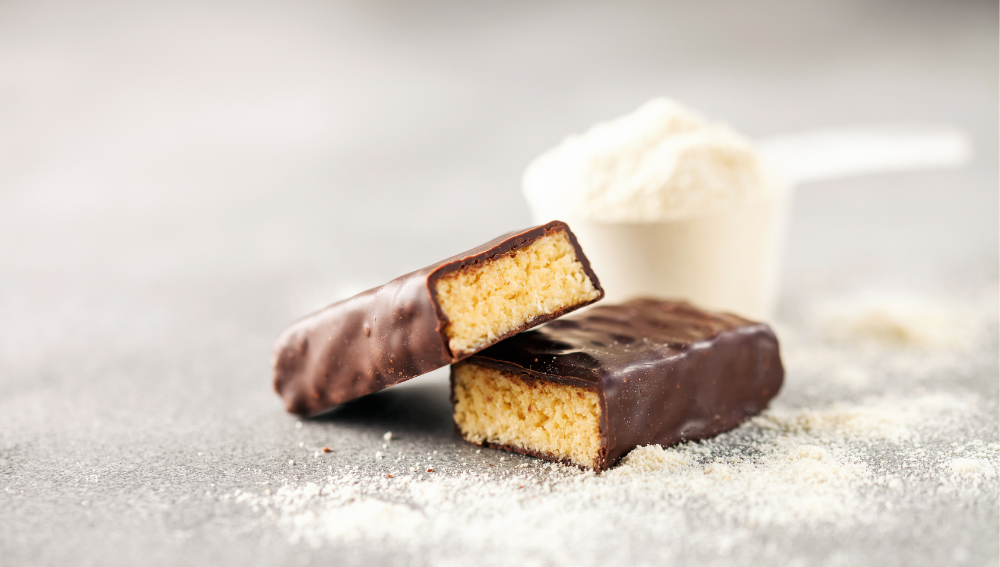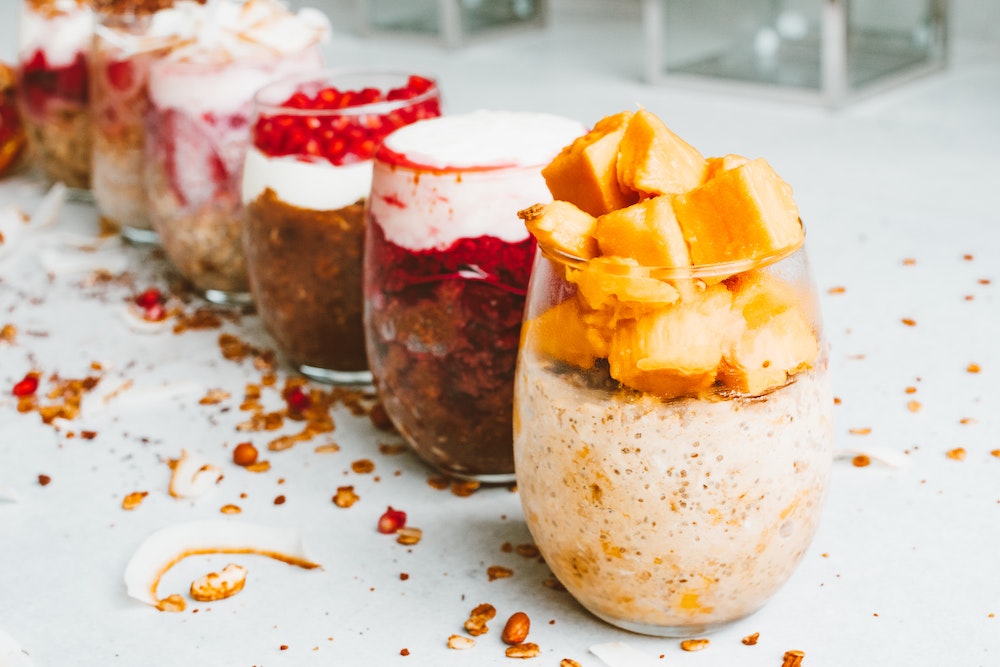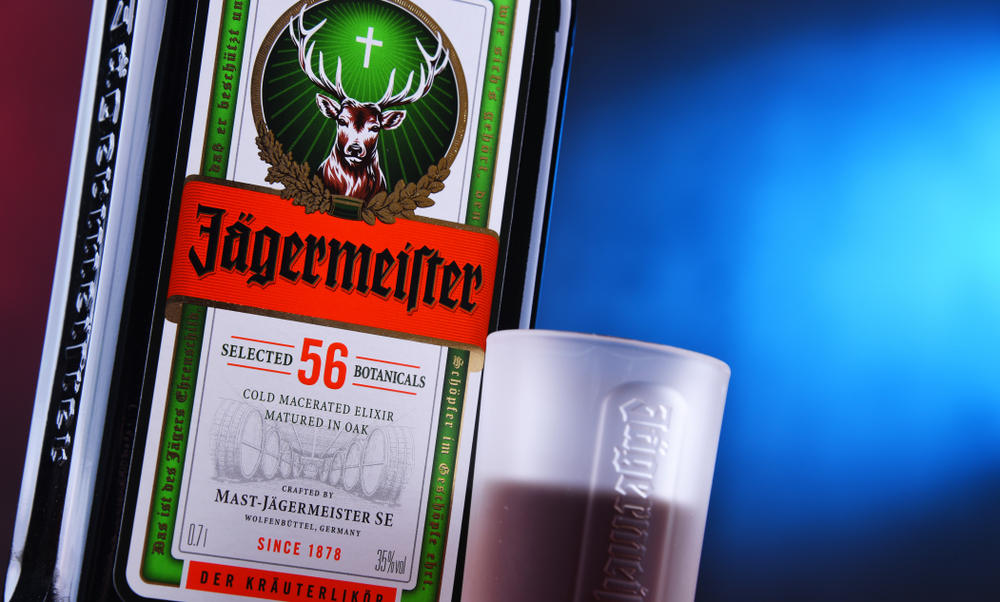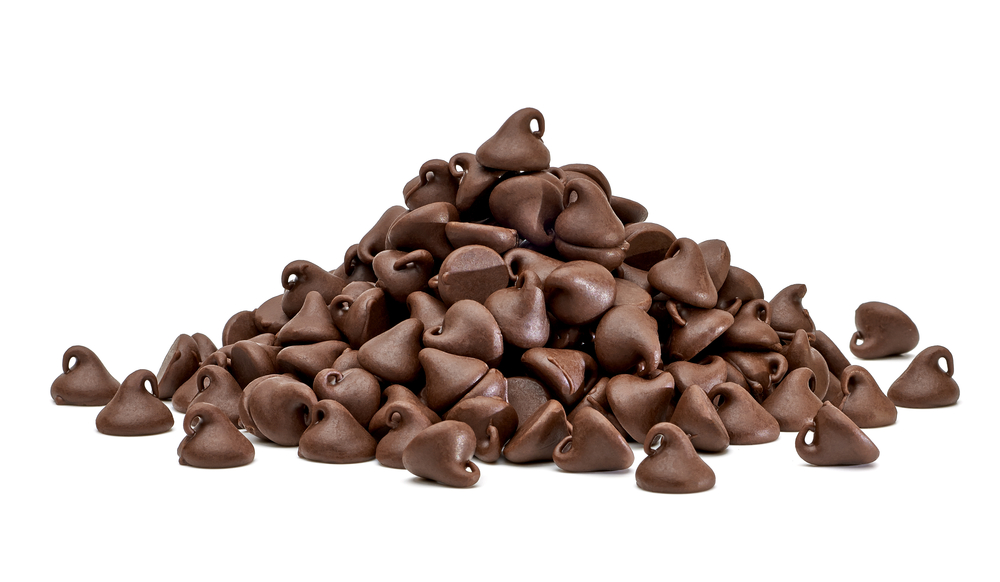Outside of France, where it originated, Green Chartreuse is popular in bars across the globe. Germany, Mexico, Japan, Australia, the UK, and the US are all especially fond of this herbal liqueur, though it’s available worldwide. It’s not hard to see why this unique elixir is so popular internationally.
The only trouble with Green Chartreuse is that it is fairly expensive. If this vibrant green liqueur is out of your price range, what are some good substitutions for Green Chartreuse?
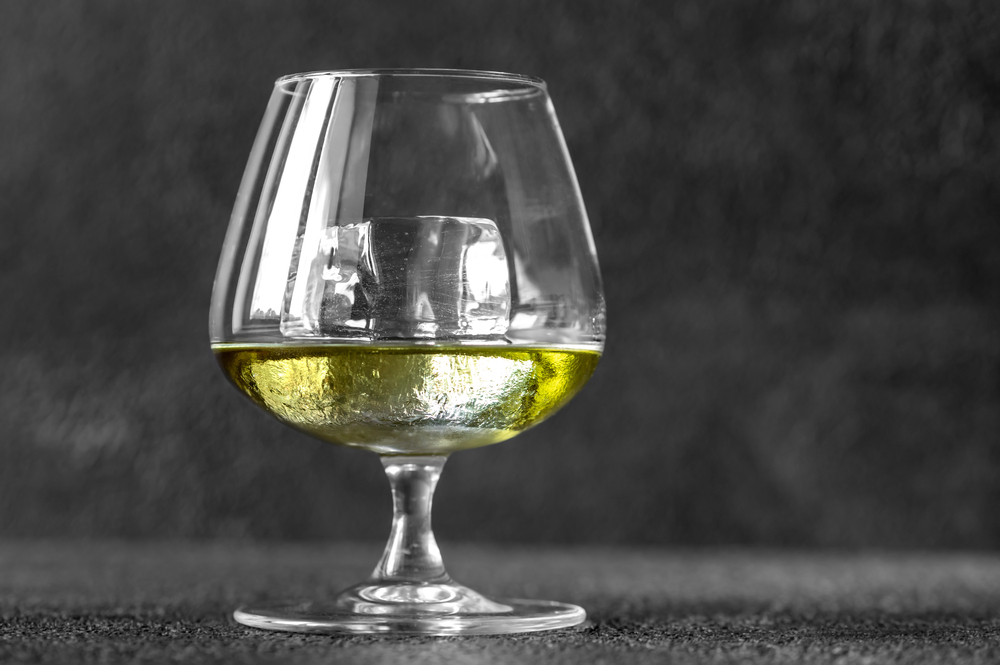
While it will be impossible to perfectly replicate the unique flavor of Green Chartreuse, the best substitute for it is Dolin Genepy. Liquor Strega is a reasonable substitute in shaken cocktails, while Benedictine works better in a stirred cocktail.
Substitutes For Green Chartreuse
A bar staple since the 1890s, Green Chartreuse also pairs excellently with all sorts of chocolates and desserts. It’s also used in a number of cocktails as a mixer. The flavor is herbal and one-of-a-kind, making it incredibly sought after.
Chartreuse: A Quick Guide
Prowling over a book of cocktail recipes, you might find a Last Word or a Bijou. You’re interested in making it, only to discover that Chartreuse is $50-$60 a bottle. This price tag can reasonably put a few home bartenders off.
That might leave you curious as to what in your cupboard might take its place. To find the best substitute for this enigmatic brew, it helps to have a better understanding of what it is, and what it tastes like.
Chartreuse is a French liqueur with an iconic, indicative green color. The green is completely natural, and it is one of the only liqueurs that gets that color without additional additives. While it picked up popularity on a global scale in the 1890s, monks in the French Alps have been cooking it up since at least 1737.
How To Substitute Green Chartreuse
What makes Green Chartreuse so unique is the well kept secret recipe of over 130 different plants and herbs. Since this list is so clandestine in nature, it can be hard to replicate with another liqueur or blend of bitters.
The flavor of Green Chartreuse is spicy, herbal, and smooth. There’s a bit of sweetness to it, but Yellow Chartreuse is going to be the sweeter, more honeyed variety. Green Chartreuse is also fairly boozy, meaning you can taste the alcohol along with the herbs.
Tasting notes usually include apple, mint, gentian, sage, and vanilla.
When looking for a replacement for Green Chartreuse, keep in mind that you want to find something herbal, boozy, and smooth. If the look of the cocktail is important as well, you might find something that is as vibrant as Chartreuse.
Try not to find anything that is going to be too sweet and syrupy. Keep in mind, there’s no indistinguishable alternative to Green Chartreuse. You will find some things that are somewhat close, but your cocktail will still look and taste somewhat different.
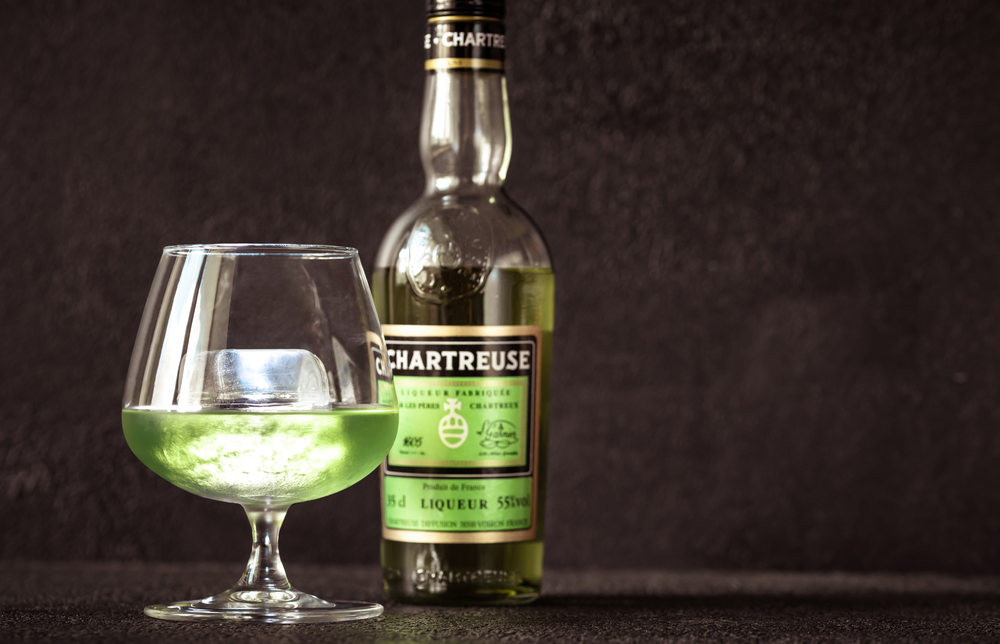
Dolin Génépy
One of the best substitutes for Green Chartreuse, Dolin Génépy is another France-born herbal liqueur. It is unique to the Savoy region, where its character is derived from alpine shrubbery. It can also be called Genepi if it is being shipped from Italy instead of France. The liqueur inside the green bottle will taste the same no matter how the label spells it.
It is associated with the high mountainous regions of France, Switzerland, and Italy. Usually taken neat, it is known to have a taste that brings to mind high altitudes and adventure.
It is loosely related to absinthe, in that it shares a few botanicals in the Artemisia genus. However, it compares with Chartreuse in that it is slightly less sweet and decidedly botanical in flavor.
It is also somewhat greenish in hue, and is an alpine liqueur. This means it will have some of the same woody, tea-like notes that Chartreuse will carry. The flavor of Génépy can be considered somewhere between absinthe and Green Chartreuse.
Best In
Génépy is best as a substitute for Green Chartreuse in shaken cocktails. Last Word and Biters are two drinks that use Green Chartreuse to their advantage, but could utilize Génépy as well.
Last Words are meant to balance sharp, sour and sweet. First mixed up in the 1920s, it’s one of the most classic Green Chartreuse cocktails. It is meant to be intriguing and full of nuances, using gin, Maraschino liqueur, and lime juice.
Génépy will be able to provide the spiciness you’d like to have in a Last Word. If you need to balance out the flavors, try adjusting the amount of gin or lime juice in the drink.
The Biter cocktail shares a lot of similarities to a Last Word, but it rests more on the herbal, boozy shoulders of Green Chartreuse. Because it is nice and herbaceous, Génépy can also take its place here. Absinthe is often in a Biter cocktail as well. With the addition of Génépy, that absinthe taste might become a little too strong.
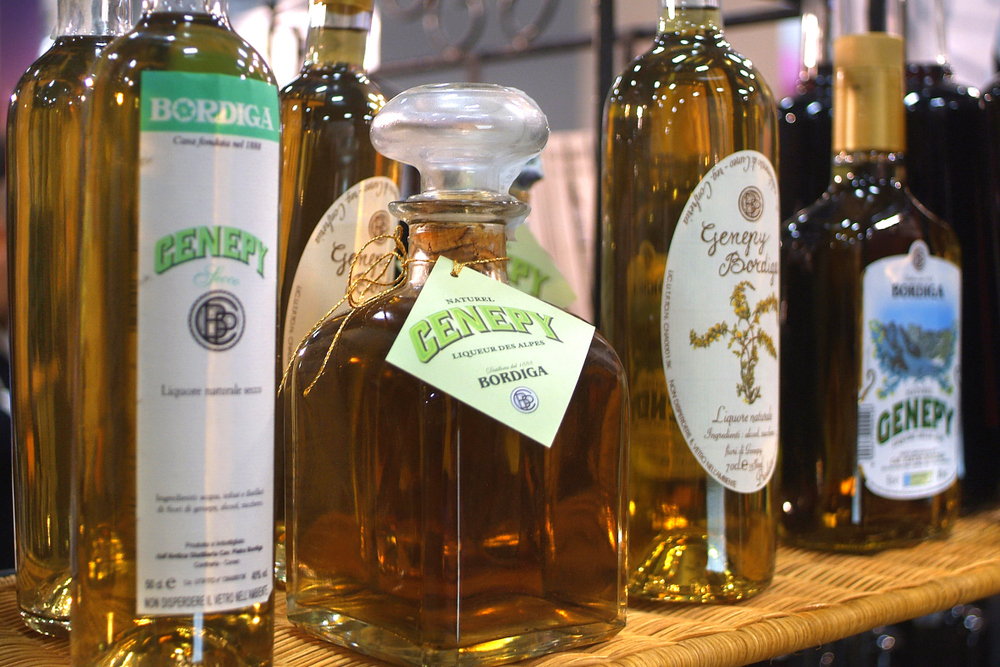
Only a dash of absinthe is used in a Biter, so try to leave it out if you think the flavor becomes too unbalanced.
Liquore Strega
Another strongly herbal Italian liqueur that can act as a decent substitute for Green Chartreuse in some cocktails. Strega is an Italian word meaning “witch”, which is why it’s sometimes called “witches liqueur.”
Like Green Chartreuse, it is a digestif (or amaro), and is made from a variety of botanicals. Notably, it contains saffron, mint, and juniper.
That note of mint and blend of botanical, herby flavors are what make Liquore Strega a substitute for Chartreuse. Strega is usually compared more often to Yellow Chartreuse, but the similarities in taste are why it can stand in for Green.
It has more of a medicinal tone, but some people say that Chartreuse has that sort of ‘old world medicine’ flavor. It will bring the herbs you’re looking for.
Strega, however, is much sweeter than Green Chartreuse. It is lighter and less alpine than Chartreuse, so use it wisely when substituting it in.
Best In
Like Génépy, Liquore Strega will pair well in a stirred cocktail, like a Last Word or Biter. In the Last Word, it will add excellent sweetness and spice. The Biter will benefit from the complexity of Strega, and won’t make the absinthe flavor too overwhelming.
Verdant Lady
Another cocktail that Strega can shine in is a Verdant Lady. This is a shaken cocktail that is newer to the scene. It’s made with a simple recipe of gin, simple syrup, lime juice, and mint for garnish.
Strega will make it so that the mint in a Verdant Lady really shines. The gin and lime pair with it well the same way they would with Green Chartreuse. The drink is nice and tart, so sweet Strega will cool things down a bit.
The biggest issue with substituting Strega for Green Chartreuse is the color. As the name suggests, The Verdant Lady is a cocktail that is beautifully green, a color it gets from the Chartreuse.
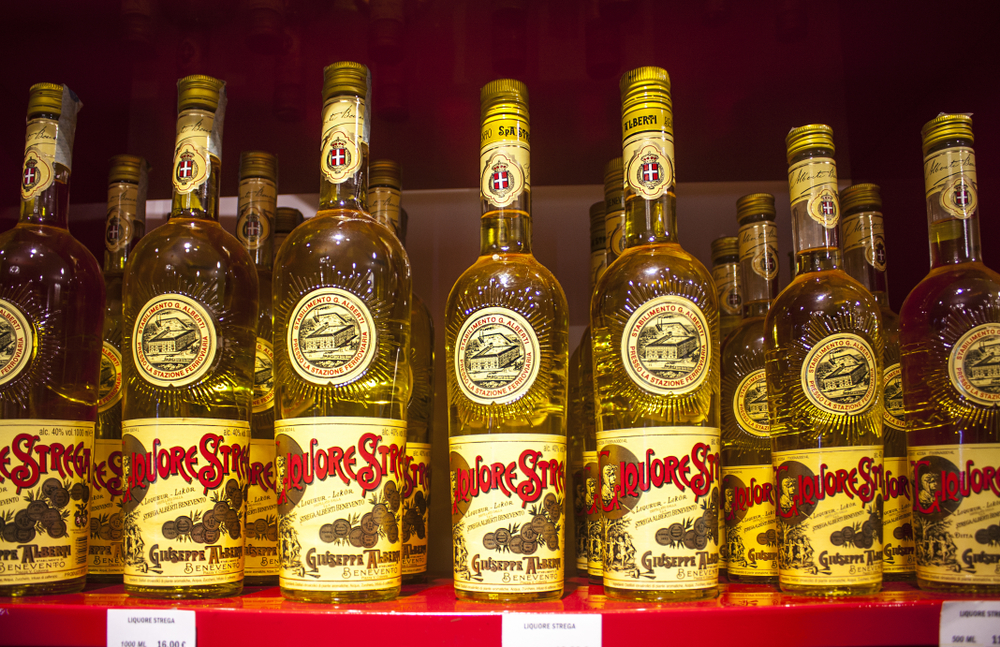
When you use Strega, that color will just not happen, as Strega is more of a paler yellow color. However, if you’re just looking to account for taste, it will get as close as possible.
Mumbai Mule
Mumbai Mules sometimes use Chartreuse, are another cocktail that Strega can lend a hand in. The powerful ginger syrup, spiced with cumin and coriander, also contains saffron. Saffron is already present in Strega, meaning it will be beautifully amplified by the addition.
Benedictine
Bénédictine is another French liqueur that can step in for Green Chartreuse. It was developed by a wine merchant in the 19th century. This spicy, brown-bottled liqueur is a blend of berries, flowers, roots, herbs, and spices.
It’s described as having ‘holiday spices’ like cinnamon, fir, myrrh, and red berries. It touts 27 herbs and spices, which falls short of the 130 that Green Chartreuse proudly sports. However, those 27 spices are a well guarded secret, just like the blends that go into Chartreuse.
21 of the flavorings are known, however:
- Angelica
- Hyssop
- Saffron
- Mace
- Juniper
- Fir
- Aloe
- Lemon and lemon balm
- Arnica
- Tea
- Thyme
- Coriander
- Cloves
- Vanilla
- Red berries, usually cranberry or other tart, small fruits
- Nutmeg
- Cinnamon
With such a blend of spices, it’s clear to see how Bénédictine could stand in well for Green Chartreuse. It has a rich, spiced flavor. However, it will miss some of the more herbal notes that you’ll look for in a Chartreuse. It is also not as medicinal tasting, like Strega or Chartreuse. Instead, it’s a bit more honeylike.
As stated, none of these substitutions for Green Chartreuse will perfectly take its place. However, Bénédictine, among others, will still make a delicious cocktail if you’re out of the lovely green liqueur.

Best In
Bénédictine will work wonders in a shaken cocktail like a Bijou, or in a chocolate mixture. A Bijou is considered a sort of ‘cousin’ to the Last Word, another drink that uses Green Chartreuse.
Bijou
A Bijou cocktail is a classic that is meant to evoke the hues of glittering gemstones. That tri-color name comes from the three liquors that make it up: clear gin for diamonds, red rubies for vermouth, and green emeralds for, of course, Green Chartreuse. Bijou comes from the French word bijoux, meaning jewels.
Because of the vermouth, there’s already a sweet spiciness present in the overall flavor. Bénédictine will add to that, making it excellent as an alternative here.
As it is, some recipes change up the ratios to use less Chartreuse; using Bénédictine in its place isn’t far-fetched. While you’ll be missing the elements of booziness and herbal tastes, the spices are still present. You’ll also get the same smoothness that Chartreuse brings to the table.
With Chocolate
One of many things Green Chartreuse is used in is chocolate. It’s surprising, but this herbal blend is actually delicious when used as a liqueur filling to chocolate bonbons, or in hot chocolate.
In the French alps, where Green Chartreuse begins its life, a mixture of steaming hot cocoa with Green Chartreuse is popular. It is called Verte Chaud – literally meaning “hot green”. This toasty warm après-ski drink is meant to be rich, warm, and a little botanical.
Similar to a Mexican hot chocolate, Verte Chaud should have a little bit of a bite from the Chartreuse.
Thankfully, that’s where Bénédictine steps in. With its warm ‘holiday’ flavors like fir cones and cinnamon, it works beautifully in hot chocolate. The bittersweetness of chocolate mixes with the tart, sweet red berries and the spiciness of nutmeg and cinnamon.
It won’t taste identical to a Verte Chaud, but Bénédictine is still marvelous in a hot chocolate. Naturally, you will be missing the Verte in a Verte Chaud, but the color isn’t actually that apparent when it’s mixed with rich dark chocolate. Color semantics aside, Bénédictine works well as a substitute for Green Chartreuse in this instance.
Sambuca
Colorless and heavy in the anise department, sambuca is surprisingly similar in flavor to Green Chartreuse. It was first developed almost 200 years ago in the Italian comune of Civitavecchia by Luigi Manzi. The name comes from the Latin word sambucus, which means elderberry. This gives a hint to the tastes inside.
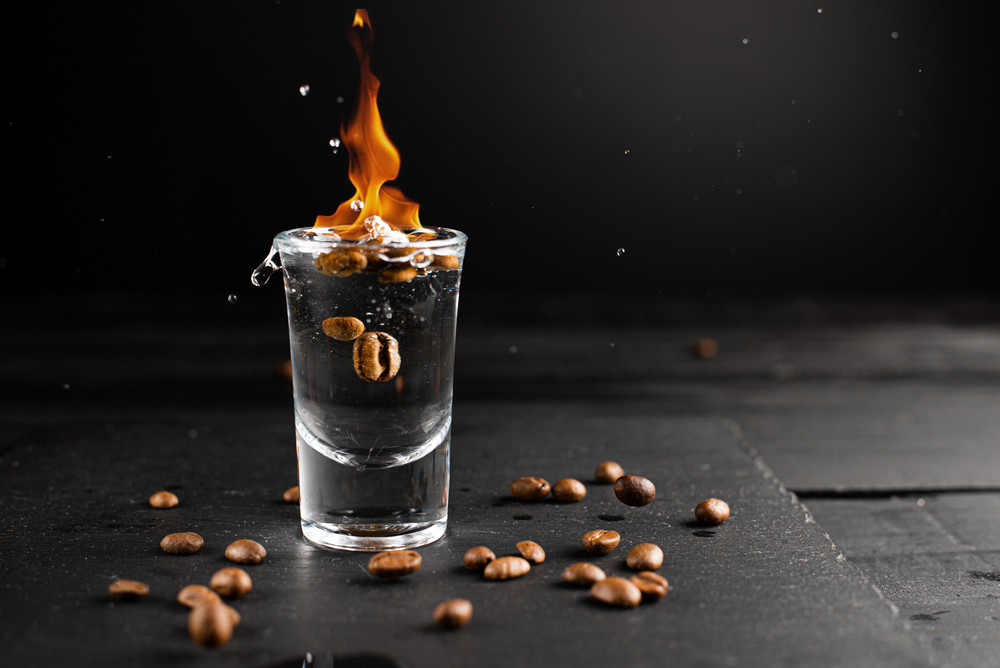
Some tasters detect notes of elderflower and elderberry in Chartreuse, which sambuca will carry well with it. The major flavor of sambuca, though, is anise. Anise is a pungent spice, and one that will manage to lean somewhat closely to Green Chartreuse.
Overall, people tend to agree that sambuca tastes a bit like black licorice.
One notable thing that makes it a good substitute for Green Chartreuse is how smooth it is. Sambuca is regarded as being much more smooth when compared to harsher drinks like vodka or whiskey.
The smoothness, light spice, and overall booziness are reasons it’s is a workable alternative to Green Chartreuse
Best In
With elderflower and licorice-like flavors, you’ll want to use this in cocktails that use Green Chartreuse to meet those ends. One good example of that is a Lumiere. Another cocktail where Sambuca might step in is a Dreamcatcher.
Lumiere
A Lumiere cocktail is typically made with St. Germaine- an elderflower liqueur. It also has a splash of Green Chartreuse. What makes Sambuca doable in this drink is that it will perfectly highlight and compliment the elderflower already present.
Much like many cocktails with Green Chartreuse, it contains a squeeze of lime. With that lime addition, you’ll still get much the same feeling of the original recipe, though it will have less of a spicy sting. Gin is also a common pairing for Green Chartreuse, so you will still recognize much of the same ambiance.
Less than an ounce (0.75 of one, to be exact) of Green Chartreuse is used in a Lumiere, so swapping in the sambuca at the same volume won’t suddenly overwhelm the taste. You aren’t going to be grappling with a drink that suddenly tastes like licorice. If you are concerned, though, you can instead use 0.50 oz of sambuca.
The elderflower will receive a refreshing sweet boost, while the smooth, pungent alcohol taste that Chartreuse brought won’t be left behind.
Dreamcatcher
The dreamcatcher is a newer cocktail on the bartending scene, but not one that is without presence. This blanco tequila based drink uses Green Chartreuse to round out the flavors, and is garnished with something that sambuca can easily take over for: anise.
The anise seed at the top is more of a garnish, but replacing the Green Chartreuse for sambuca will make it a highlight of the flavor within. The smooth texture of sambuca will take some of the edge off of blanco tequila, and sit nicely with the lime.
Elderflower will help add some sweetness that Chartreuse usually brings with it to help cut the sourness from grapefruits and lime.
This is a strong cocktail, but using sambuca can bring that ABV down just a touch. It is 38% alcohol by volume, while Green Chartreuse is typically 40-69%.
Other Substitutes
Some other alternatives might not work quite as well, but can still find a place where Green Chartreuse was. Look around your liquor cabinet for some of these other possible substitutes for Green Chartreuse:
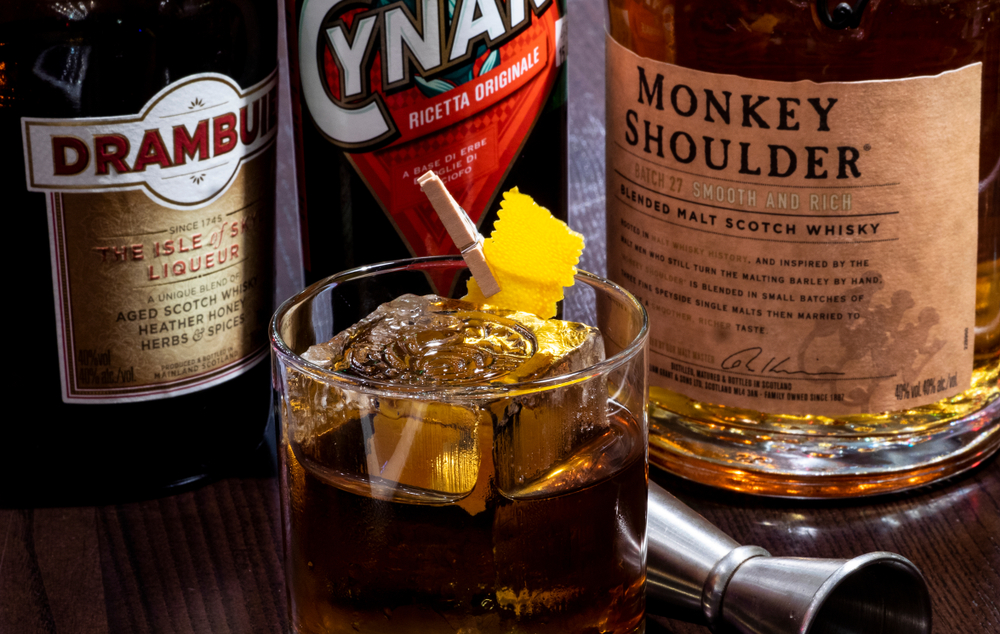
- Drambuie. This is a golden liqueur made from Scotch whiskey. At 40% ABV, it is flavored with honey, herbs, and spices. It might be more woody and sweet than Green Chartreuse, while being much less botanical. However, the spices might work to your advantage in a cocktail.
- Angostura Bitters . This spicy, aromatic blend of herbs is very concentrated, and might not work in recipes where the Chartreuse flavor might be more understated. The spices in Angostura bitters include cloves and cinnamon, and the bitterness might bring to mind some of the medicinal feeling of Chartreuse.
- Jagermeister. A German digestif, Jagermeister has an herbal, spicy taste to it. It is flavored with cloves, anise, ginger, and cinnamon. The slight floral scent in Jagermeister is reminiscent of the botanicals in Chartreuse.
- A Spice Blend. If you’re only looking for the spiciness of Chartreuse, you might be able to make a blend of spices all your own. Try experimenting with different ones; there are 130 spices in Green Chartreuse, and they’re not all known, so you’ll have to get creative. Some herbs to try are basil, sage, cinnamon, anise, cardamom, cumin, mint, elderflower, chamomile, cloves, allspice, and lavender. Dried apple peels and vanilla could help as well.
Can You Substitute Absinthe For Green Chartreuse?
The short answer is ‘not really, because they do not taste similar.’
The long answer to this is a bit more complicated.
Absinthe and Green Chartreuse do share some similarities. They are both bright green, and they both have fairly high alcohol volumes. The drinks don’t taste much alike aside from that, however, aside from the very lightly spiced flavor that absinthe employs.
You could potentially use absinthe in place of Green Chartreuse, they have radically different profiles. The tastes are too different to properly step in for each other.
That said, nothing quite compares to the taste of Green Chartreuse, so if you want to swap absinthe in for color alone, it could be done. Anything you use instead of Green Chartreuse won’t taste exactly the same anyway.
What makes other swaps work is that they all have something in common with Green Chartreuse. It could be some of the spices, or the booziness, or the smooth texture.
It is all down to experimentation. If you’ve got a good supply of both and some time to try things out, see what works best. Depending on how much Chartreuse is needed in a recipe, the extremely different taste of absinthe might be a suitable swap.
Can You Substitute Yellow Chartreuse for Green Chartreuse?
You could theoretically substitute in Yellow Chartreuse for Green Chartreuse. They are made from the same base, after all. Yellow Chartreuse, like any other substitute, doesn’t quite scratch the same itch.
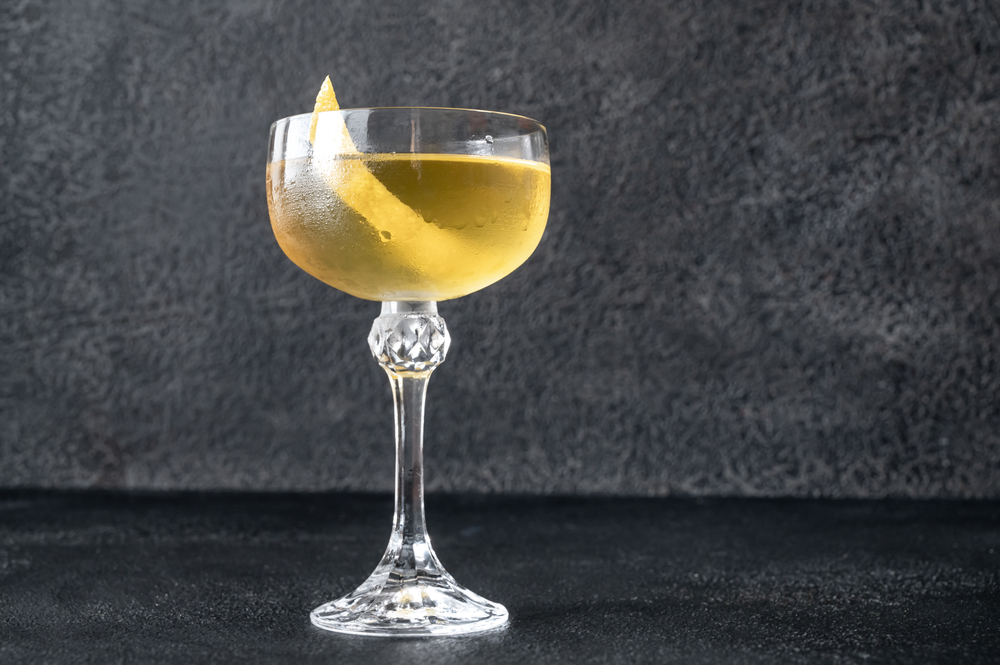
While it still uses a lot of the herbs and flowers that Green does, Yellow is much sweeter and more honeyed. In fact, honey is one of the major flavors in Yellow Chartreuse. It is also lower proof, meaning you won’t taste that brash alcoholic feeling.
If you want to use Yellow Chartreuse in place of Green, you’ll have to make some substitutions. For example, an herbal extraction might work well in drinks where you’re really relying on the herbal taste of Green Chartreuse.
Conclusion
In terms of taste, nothing is going to quite come close to the unique flavors of Green Chartreuse. The closest relative it has, so to speak, is Yellow Chartreuse. Even it, however, is sweeter and less alcoholic than its more verdant sibling.
If you do need a substitute for Green Chartruese, there are a few avenues you can look to. Dolin Génépy is another French liqueur that might be able to stand up to the task. It is herbaceous as well. It has some of the tea-like, medicinal notes of Green Chartreuse.
You can also sample swaps like Bénédictine, sambuca, or Strega. They won’t be spot-on replicas, but they’ll still make temptingly delicious drinks.


